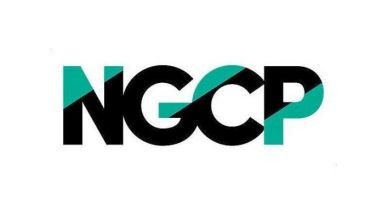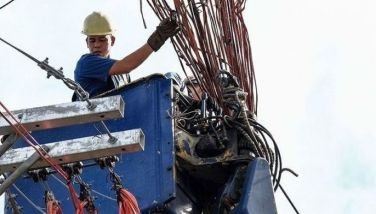Cheaper power?
June 8, 2005 | 12:00am
This columnist’s attention was called recently regarding the piece on the triple whammy that could hit power consumers which I wrote some weeks back.
It will be recalled that this column warned about three setbacks that electricity users are facing today. The first whammy are the recent hikes in generation charges which the Energy Regulatory Commission gifted the state-run National Power Corporation with. The second whammy is the application of new value added tax rules on power – this will be reflected in the July electricity bill. The third is the possible loss of lifeline discount rates if the Supreme Court upholds a Court of Appeals ruling junking unbundled rates.
In the same piece, I mentioned that lifeline discount rates is the only remaining air valve available to hapless power consumers. Without it, there is no other way of mitigating the sharp rise in generation charges of Napocor and the application of new VAT rules.
Wrong, says our coffee shop habitué friends. I am dead wrong, they say.
There is a way to mitigate the plight of power consumers, they point out. In fact, there is a way to lower power rates, at least in Metro Manila.
This unknown "air valve" lies in where the Manila Electric Co. or Meralco which buys the power that it distributes. According to these coffee mugsters, Meralco actually buys from two sources. One is Napocor, of course. The other is its own power producers, namely First Gas and Quezon Power Limited.
Meralco, they say, buys 45 percent of its requirements from Napocor. The other 55 percent is sourced from its power producers. Our friends do not exactly know how, but there is a way to "manage" the percentage so that the resulting retail price of electricity ends up lower.
Yes, Virginia. There is a way to lower power rates.
At present, these caffeine connoisseurs point out that it may be more expensive for Meralco to buy power from Napocor than from its own producers. This is because of the two recent rate hikes, the second having been granted by the ERC just last April. In addition, the generation rates that Napocor bills to Meralco has a built-in transmission charges since Napocor’s electricity has to pass through the lines of the National Transmission Corp. or Transco to get to Meralco’s substations.
The higher net generation charges by Napocor seem to favor buying less from the state-run power firm than from Meralco’s own producers.
There is, however, a mandated rate reduction of 30 centavos per kilowatthour for residential customers for power bought from Napocor, half of the coffee table points out. This discount seems to favor buying more power from Napocor.
Not so fast, the other half counters. If Meralco buys more from Napocor just because of that discount, the resulting higher generation charges will more than offset the effect of the mandated reduction. There is a trade off, they point out: buy more from Napocor, more discounts for residential customers but higher generation charges. Buy less from Napocor, less discounts for residential customers but the generation charges also go down.
Furthermore, the mandated rate reduction does not benefit businesses and industries. They have nothing to mitigate the resulting higher generation charges with, our friends point out.
What about the fixed charges Meralco pays its power producers, the other half of the coffee table asks. Well, they are as much a reality for Meralco as it is for Napocor’s deal with its own independent power producers. In computing overall bulk supply costs, the fixed costs are factored in plus the variable costs.
It is in the variable costs where the key to lowering power rates lie, the other side explains. In February this year, the variable costs of Meralco’s power producers ranged from P1.52 to P2.72 per kilowatt hour. Napocor’s selling rate at that time was P4.00 per kilowatt hour. That may explain the 45-55 ratio.
Can the ratio be upped further to favor buying from the lower-priced source?
That was a question the barako gang could not answer. In the first place, why can’t Meralco buy from just one source – the cheaper source? If Napocor power is more expensive, why not buy 100 percent from the less expensive producers?
Conversely, if at any point in the future, Napocor generation rates become cheaper than that of other producers, why not buy all from Napocor?
Is the decision purely a matter of economics? No one in the coffee table could say. The cappuccino kibitzers hit a blank wall.
But one thing is clear. By managing that percentage of how much power is sourced from which supplier, the resulting retail cost of electricity can go up higher or lower.
Somebody please tell if that could be done. And if yes, why is that not being done.
Cheaper power rates are possible. But perhaps only if there is a will to give us cheaper power.
For comments, e-mail at [email protected]
It will be recalled that this column warned about three setbacks that electricity users are facing today. The first whammy are the recent hikes in generation charges which the Energy Regulatory Commission gifted the state-run National Power Corporation with. The second whammy is the application of new value added tax rules on power – this will be reflected in the July electricity bill. The third is the possible loss of lifeline discount rates if the Supreme Court upholds a Court of Appeals ruling junking unbundled rates.
In the same piece, I mentioned that lifeline discount rates is the only remaining air valve available to hapless power consumers. Without it, there is no other way of mitigating the sharp rise in generation charges of Napocor and the application of new VAT rules.
Wrong, says our coffee shop habitué friends. I am dead wrong, they say.
There is a way to mitigate the plight of power consumers, they point out. In fact, there is a way to lower power rates, at least in Metro Manila.
This unknown "air valve" lies in where the Manila Electric Co. or Meralco which buys the power that it distributes. According to these coffee mugsters, Meralco actually buys from two sources. One is Napocor, of course. The other is its own power producers, namely First Gas and Quezon Power Limited.
Meralco, they say, buys 45 percent of its requirements from Napocor. The other 55 percent is sourced from its power producers. Our friends do not exactly know how, but there is a way to "manage" the percentage so that the resulting retail price of electricity ends up lower.
Yes, Virginia. There is a way to lower power rates.
At present, these caffeine connoisseurs point out that it may be more expensive for Meralco to buy power from Napocor than from its own producers. This is because of the two recent rate hikes, the second having been granted by the ERC just last April. In addition, the generation rates that Napocor bills to Meralco has a built-in transmission charges since Napocor’s electricity has to pass through the lines of the National Transmission Corp. or Transco to get to Meralco’s substations.
The higher net generation charges by Napocor seem to favor buying less from the state-run power firm than from Meralco’s own producers.
There is, however, a mandated rate reduction of 30 centavos per kilowatthour for residential customers for power bought from Napocor, half of the coffee table points out. This discount seems to favor buying more power from Napocor.
Not so fast, the other half counters. If Meralco buys more from Napocor just because of that discount, the resulting higher generation charges will more than offset the effect of the mandated reduction. There is a trade off, they point out: buy more from Napocor, more discounts for residential customers but higher generation charges. Buy less from Napocor, less discounts for residential customers but the generation charges also go down.
Furthermore, the mandated rate reduction does not benefit businesses and industries. They have nothing to mitigate the resulting higher generation charges with, our friends point out.
What about the fixed charges Meralco pays its power producers, the other half of the coffee table asks. Well, they are as much a reality for Meralco as it is for Napocor’s deal with its own independent power producers. In computing overall bulk supply costs, the fixed costs are factored in plus the variable costs.
It is in the variable costs where the key to lowering power rates lie, the other side explains. In February this year, the variable costs of Meralco’s power producers ranged from P1.52 to P2.72 per kilowatt hour. Napocor’s selling rate at that time was P4.00 per kilowatt hour. That may explain the 45-55 ratio.
Can the ratio be upped further to favor buying from the lower-priced source?
That was a question the barako gang could not answer. In the first place, why can’t Meralco buy from just one source – the cheaper source? If Napocor power is more expensive, why not buy 100 percent from the less expensive producers?
Conversely, if at any point in the future, Napocor generation rates become cheaper than that of other producers, why not buy all from Napocor?
Is the decision purely a matter of economics? No one in the coffee table could say. The cappuccino kibitzers hit a blank wall.
But one thing is clear. By managing that percentage of how much power is sourced from which supplier, the resulting retail cost of electricity can go up higher or lower.
Somebody please tell if that could be done. And if yes, why is that not being done.
Cheaper power rates are possible. But perhaps only if there is a will to give us cheaper power.
For comments, e-mail at [email protected]
BrandSpace Articles
<
>
- Latest
- Trending
Trending
Latest
Trending
Latest
Recommended
























